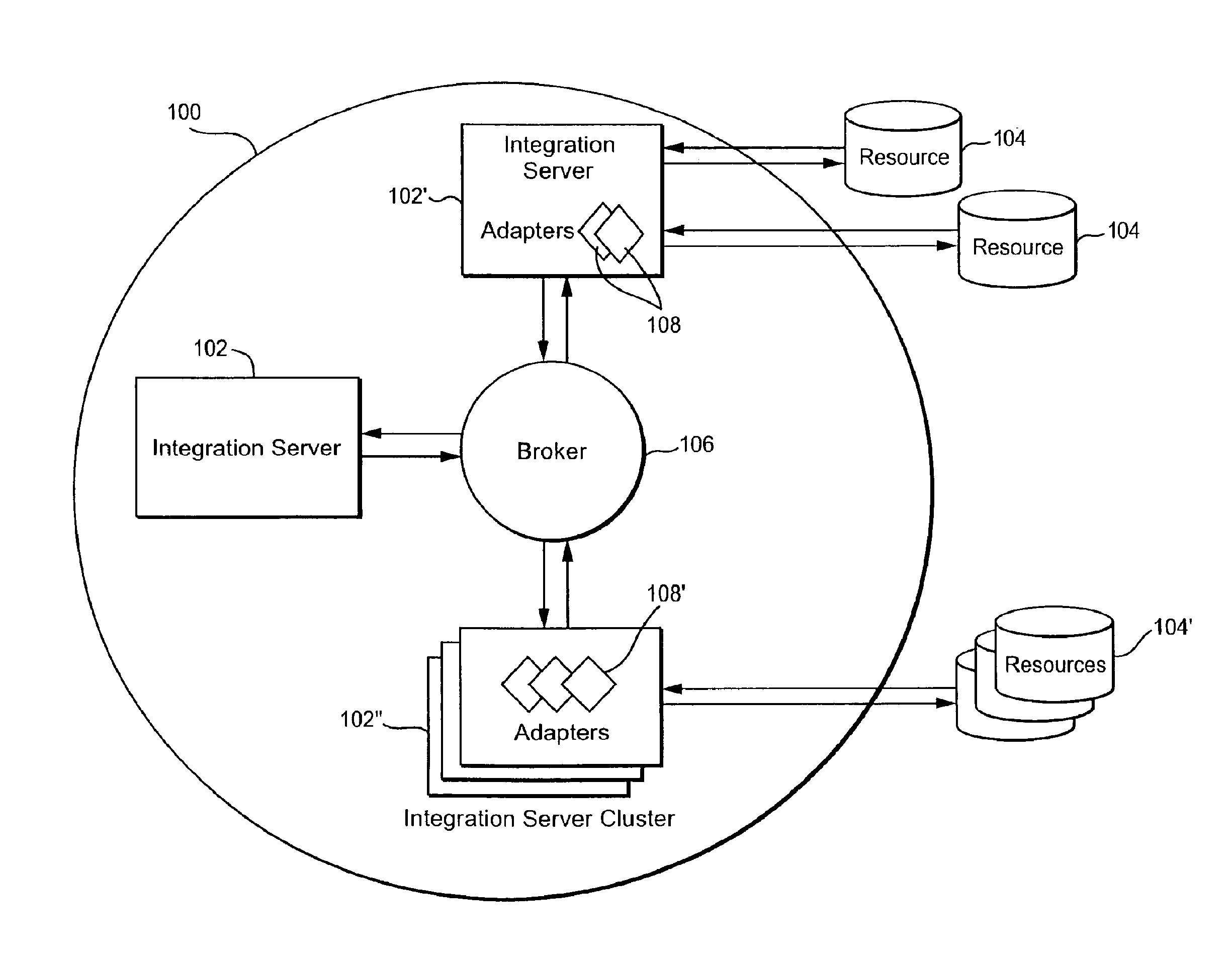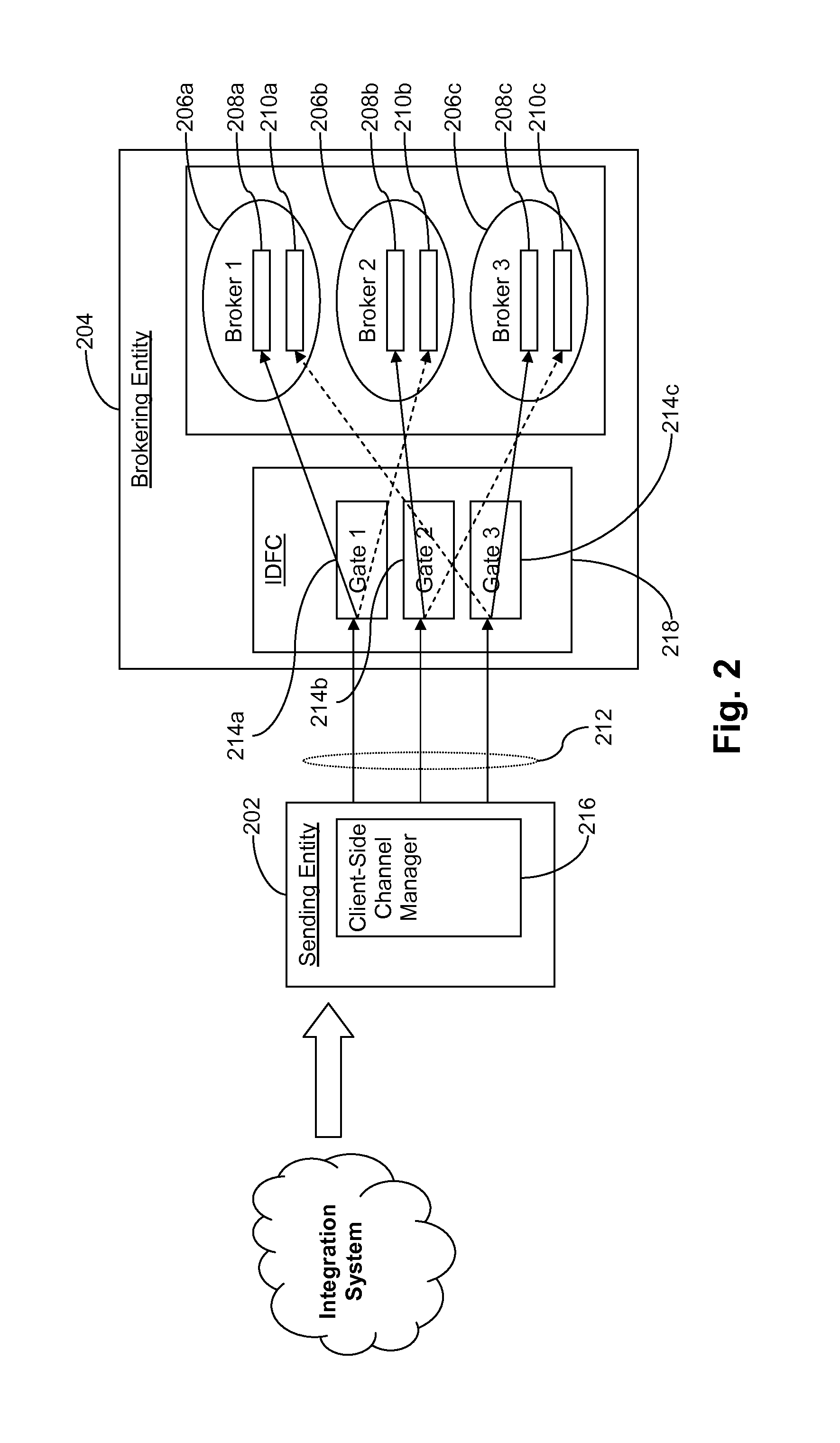Systems and/or methods for automatically tuning a delivery system for transmission of large, volatile data
a technology of transmission system and transmission system, applied in the field of application integration techniques, can solve the problems of weighting of reliability versus performance, adverse effects on message transmission performance, and carrying with it a cost of non-reliability, and achieve the effect of fast and efficient process
- Summary
- Abstract
- Description
- Claims
- Application Information
AI Technical Summary
Benefits of technology
Problems solved by technology
Method used
Image
Examples
example implementation
[0055]This section provides details concerning example components that may form a messaging system in accordance with certain example embodiments. It will be appreciated that the various components may be provided in different multiplicities, communicative arrangements, architectures, and / or the like, and may communicate using any suitable protocol(s).
[0056]A brokering entity acts as the server to broker data flows between multiple clients, which may be broadly categorized as sending and consuming entities, as noted above. The brokering entity may include two basic component types, namely, (a) one or more broker nodes arranged in one or more clusters, and (b) an intelligent data flow controller (IDFC).
[0057]An IDFC may in certain example embodiments be implemented as a centralized hardware and / or or other component in a server-side architecture. The IDFC may serve multiple functions. For example, the IDFC may host one or more gates that act as gateways for the data to be routed to t...
PUM
 Login to View More
Login to View More Abstract
Description
Claims
Application Information
 Login to View More
Login to View More - R&D
- Intellectual Property
- Life Sciences
- Materials
- Tech Scout
- Unparalleled Data Quality
- Higher Quality Content
- 60% Fewer Hallucinations
Browse by: Latest US Patents, China's latest patents, Technical Efficacy Thesaurus, Application Domain, Technology Topic, Popular Technical Reports.
© 2025 PatSnap. All rights reserved.Legal|Privacy policy|Modern Slavery Act Transparency Statement|Sitemap|About US| Contact US: help@patsnap.com



